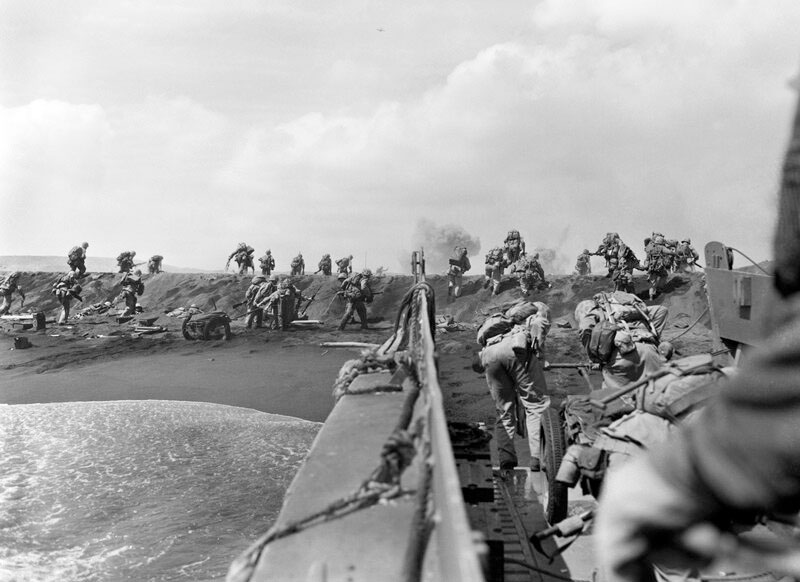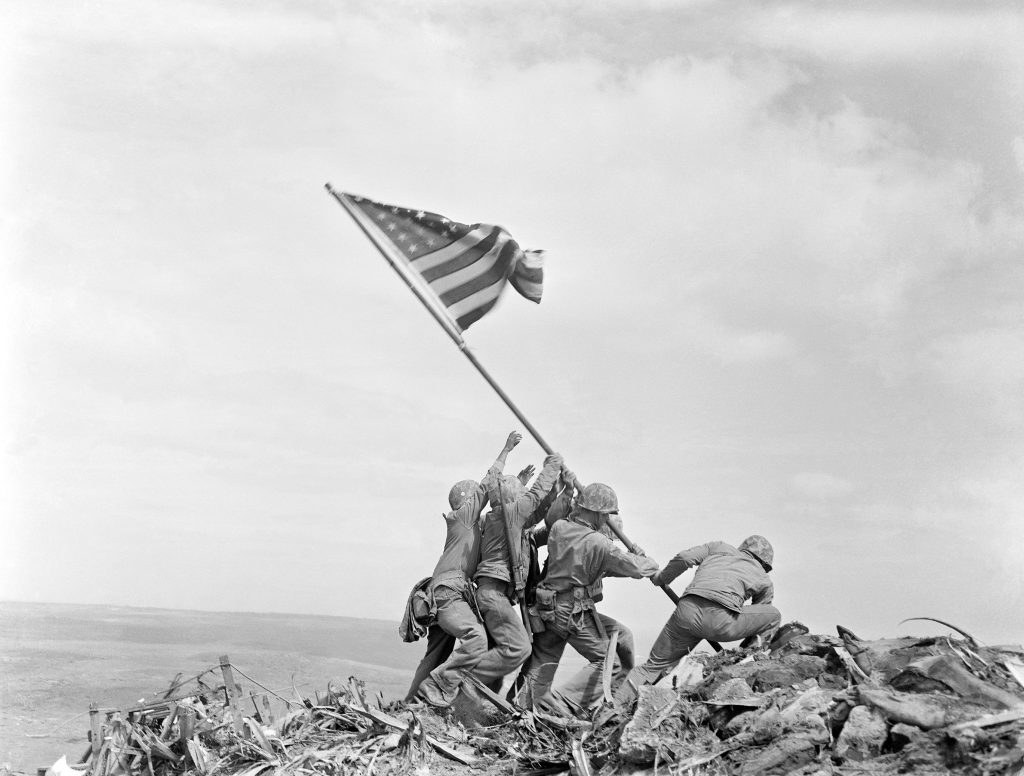The Battle of Iwo Jima (meaning sulfur island in Japanese) was a fierce battle in which the United States Navy and Marine Corps landed on and eventually captured the island from the Imperial Japanese forces. The battle lasted from February 19th to March 26th, 1945. Controlling this small volcanic island was strategically important as it was one of the closest to Japan and southern islands (750 miles south of Tokyo). Lying halfway between American Army Airforce bases in the Mariana Islands and the Japanese islands. The base on Iwo Jima gave the Japanese an ability to send early air raid warnings to the Japanese mainland and launch fighters from its airfields to intercept the bombers.
The American invasion, called “Operation Detachment,” had the purpose of capturing the island with its two operational airfields. The strategic objectives served two purposes: the first was to provide an emergency landing strip for battle-damaged bombers unable to make it back to US air bases in the Marianas Tinian, Saipan and Guam. The second was to provide airfields for fighter escorts, to give fighter coverage to the bombers flying missions over Japan. The five-week battle saw some of the bloodiest fighting of the Pacific War.
On the first day of the battle 30,000 US marines landed on the shores of Iwo Jima. The fine volcanic sand and the heavily entrenched Japanese forces made the amphibious invasion very dangerous. With the Americans struggling to get a foothold on the beaches of Iwo Jima, artillery positions in the mountains above opened fire, stalling the advancing Marines and inflicting significant casualties. Despite a banzai charge by dozens of
Japanese soldiers as dusk fell, the Marines were eventually able to move in past the beach and seize part of one Iwo Jima’s airfields—the stated mission of the invasion. The Japanese positions on the island were heavily fortified, with a dense network of bunkers, hidden artillery positions, and over 11 miles of tunnels.
The 36-day battle for Iwo Jima resulted in more than 26,000 American casualties, including 6,800 killed. The Japanese forces resisted ferociously. Of the 21,000 Japanese soldiers on Iwo Jima at the beginning of the battle, only 216 were taken prisoner. Some were captured
because they had been knocked unconscious or otherwise disabled. Most Japanese soldiers were killed in action. It has been estimated that as many as 3,000 continued to resist within the various cave systems for many days afterwards, eventually succumbing to their injuries or surrendering weeks later.
Many of the artifacts in the American Heritage Museum’s Pacific War exhibit were used during the Battle for Iwo Jima including the LVT(A)-4, M29 “Weasel,” and Type 91 cannon. For more reading on the Battle of Iwo Jima we recommend: https://en.wikipedia.org/wiki/Battle_of_Iwo_Jima





